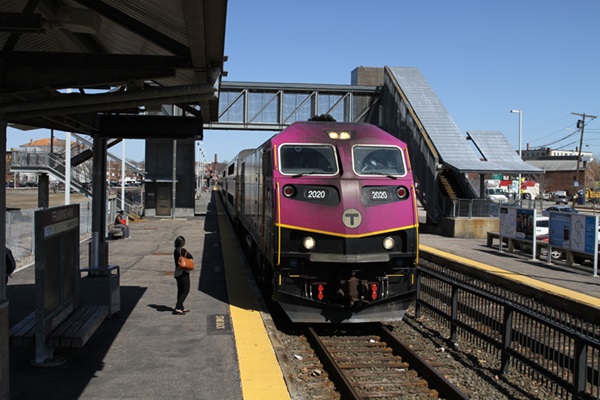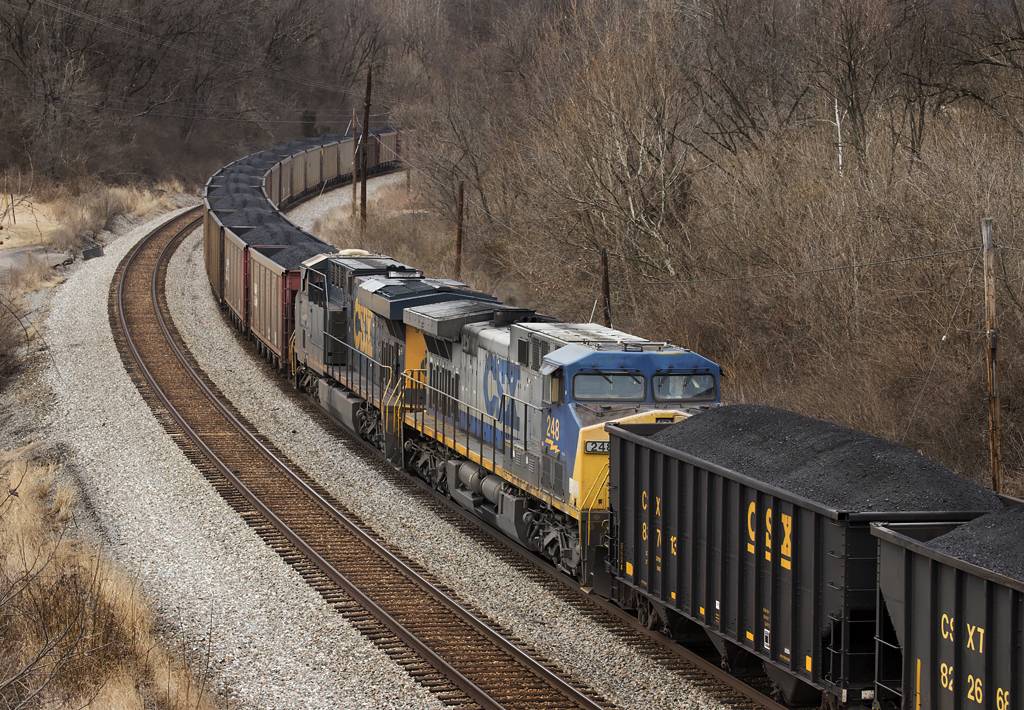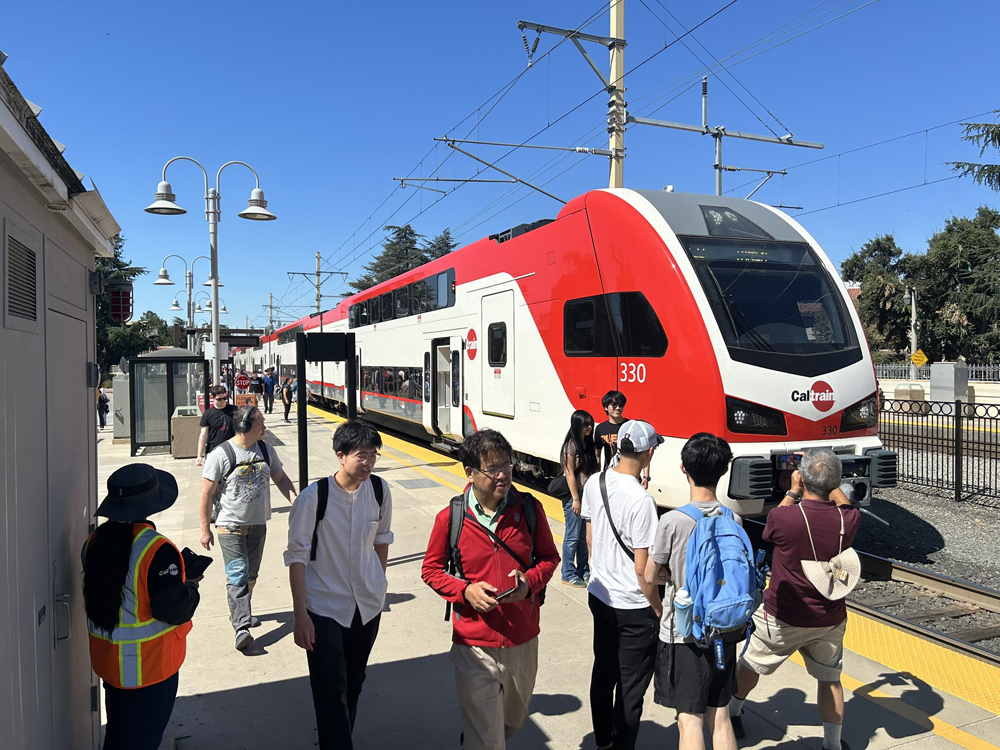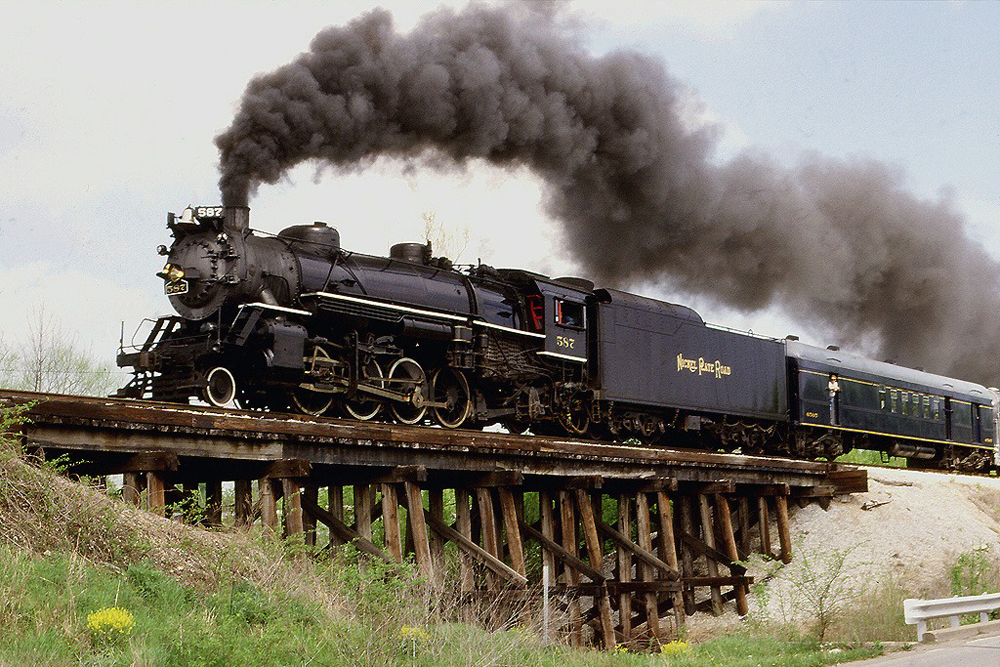In March, the FRA announced it wanted public input about automated train technology, specifically “the potential benefits, costs, risks, and challenges to achieving such automation.” May 6 was the final day for the public to comment.
The federal agency received a wide-range of opinions, from railroaders who were adamantly against the idea to industry groups excited about the prospect of autonomous trains. Among those in favor were the Association of American Railroads, which commented that automated technology is already helping the industry and, if certain regulatory barriers were removed, it could help even more.
“While railroading in America is safer than ever, we are at an inflection point and further progress requires a paradigm shift,” said AAR President and CEO Edward R. Hamberger. “Emerging automated technology now makes it possible to envision, and more importantly build, a future free from the cause of one-third of all train accidents — human error. The Department of Transportation has encouraged the development and deployment of this game-changing technology in other transportation sectors, and we hope this is the beginning of an ongoing conversation about how it can be put to work across the world’s best freight rail network.”
The AAR called on the FRA to embrace automated technology for railroading just as it has embraced the idea of driverless trucks and cars.
Uptake is a company that specializes in artificial intelligence and has been working with companies such as Progressive Rail on technology that predicts equipment failures before they happen. In their comments to the FRA, Uptake officials predicted that artificial intelligence would revolutionize the industry.
“Just as positive train control was the most significant advancement in railroad safety during the 20th century, artificial intelligence will be in the 21st century,” officials wrote. “No other technology today holds the promise [artificial intelligence] does to end railroad deaths and injuries. To achieve AI’s full potential of increasing railroad operation efficiency and safety, FRA should craft a regulatory framework that rewards and incentivizes railroad innovation.”
Once considered the stuff of science fiction, autonomous freight trains have become a reality. In 2017, mining company Rio Tinto operated a driverless train on a 60-mile stretch of tracks in western Australia. The company hopes to expand its driverless operations this year.















TEDx: The role of autonomous trains in global mobility | Amine Arezki |
https://www.youtube.com/watch?v=B6HUaqGORe0
Why does the Government keep saying we need to create jobs and automation takes them away? How much income tax is the automated truck or train going to pay to keep the Government running?
Not to worry, it will be all those truckers who wore Trump’s red truckers hats who will feel the career-ending pinch of automation first. I wonder what kind of back-o-the-hand revolt to expect when President Andrew Dice Clay doesn’t deliver for those guys? Or maybe before that, our fakey-fake stock bubble will have popped, making 75% of truck and rail hauls unnecessary.
What will fewer and fewer crew members paying into railroad retirement mean for the people who are already retired and drawing a check? Nothing like having automated trains drive the railroad version of Social Security into insolvency.
@ Thomas Engel – It was the lack of operational PTC which was a factor in the May 2016 derailment of Amtrak # 188 in North Philadelphia, and of last December’s derailment of Amtrak # 501 in Washington State, which killed 8 and 3 people, respectively. In the case of the # 501 derailment, PTC had been installed on a new bypass line, but was not yet activated. And in the case of the Silver Star/CSX freight collision earlier this year, ironically the existing signal system had been taken out-of-service for a new PTC installation – had either the current signal system, or PTC, been active, that misaligned switch would have been detected, and a route unable to be established for Amtrak # 91. Thus far, PTC has NOT “already killed at least 2 people and smashed up CSX and AMTK equipment”; the lack of operational PTC was a contributing factor in these three incidents.
A short iron-ore mine operation in Labrador City, Labrador was operating automated ore trains in 1989–I saw them–and is probably still going strong. Among other things the train automatically blew its horn every 15 seconds; no grade crossings, etc., and the public there knows about it. There are/will be places for automation here and there where special circumstances will allow. The main driver here is cutting crew and personnel costs and one needs to look at the Total Picture. Oh, and PTC has already killed at least 2 people and smashed up CSX and AMTK equipment.
Earl
SkyTrain uses fully automated trains on grade-separated tracks running on underground and elevated guideways. How does the safety record of this system have any comparison to any freight railway which has to deal with rail crossings with trucks parked on them, trespassers, police or citizens trying to flag down a train or countless other situation where the human reaction is necessary. I don’t look forward to the day a body is found by a track inspector days after a mishap because there is nobody on the following train to see it earlier.
Frankly, I was quite surprised and shocked to discover that the Association of American Railroads (AAR) was a proponent of automation within the RR industry. However, I do NOT disagree that a combination of human-run and computer-aided trains could potentially enhance safety.
At nearly the beginning of the AAR’s comments (all polished and professional looking I might add – meant to impress), the AAR President and CEO Edward R. Hamberger states that, “while railroading in America is safer than ever . . . we are at an inflection point and a paradigm shift is needed.” What is he talking about? Inflection point? Paradigm shift?
Results of human-run trains
Wait! Didn’t he just state that railroading is SAFER THAN EVER? Safety has improved dramatically: according to FRA data, U.S. railroads had the lowest train accident rate on record in 2016. The 2017 rail safety statistics continue a string of record-setting years, showing this period has been the safest ever for the rail sector. According to December 2017 FRA data per million train miles, since 2000 the train accident rate is down 44 percent, the equipment-caused accident rate is down 38 percent, the track-caused accident rate is down 55 percent to an all-time low, and the derailment rate is down 42 percent.
More evidence of human-run train success
Similarly, on the efficiency and customer service side, railroads have delivered more and more goods without significantly increasing the size of the railroad network. In 1980, traffic density was 5.58 million ton-miles per mile of road. In 2016, the number was 16.99, approximately a 300 percent increase. Today, railroads can move one ton of freight 479 miles on one gallon of fuel – doubling the fuel efficiency from 1980. Over all, rail productivity gains have been dramatic: from 1980 through 2017, rail employee productivity (measured by tonmiles per employee) rose 467 percent; locomotive productivity (measured by ton-miles per locomotive) rose 93 percent; and average freight carried per train rose 63 percent. The most commonly used broad measure of rail industry productivity — ton-miles per constant dollar operating expense — was 159 percent higher in 2017 than in 1980. All of this has benefitted rail customers: average rail rates (measured by inflation-adjusted revenue per ton-mile) were 45 percent lower in 2016 than in 1981.
Inflection point of a paradigm shift
Fancy verbiage with no basis or meaning. With all this evidence staring the AAR in the face, they still adamantly propose that a paradigm shift is necessary to further improve . . . the statistics. Reread the above noted results – was a paradigm shift needed in 1980? A shift that included automation to achieve the results noted?
In the case of safety
The comments continue. “In the case of safety, technology already has proven effective at addressing the leading causes of accidents: human error, as well as equipment and track issues.” Proven? To what empirical evidence are they pointing?
Automation = safety . . . NOT!
Automation can and will enhance the safety of the rail network, and the railroads are anxious to work with regulators to facilitate its implementation. They ARE? The RR companies maybe, but not the railroaders. Again, just because Rio Tinto ore train can make a 60-mile run, perhaps over little or no topographical under heavy observation (government and company) . . . and just because SkyTrain in B.C. Canada can run 45.5 miles safely – are not great examples of “proven” automation within the RR freight industry moving tons of freight thousands of miles over varying topography and weather conditions.
I could write a whole article but will stop at this – the AAR is not setting out to disprove their hypothesis (that automation-run trains is safer than human-run trains) and THAT, is bad science.
I don’t think you can easily predict the effect on jobs. No crews might mean railroads find it economical to run more frequent, smaller, trains. It might make some types of passenger train more economic. In general, the only immediate affect is that it reduces the per-journey cost of operating a train, and that will inevitably mean the potential exists for more flexibility. Time will tell.
Self driving trains is an inevitability. The question right now is when, not if.
Don’t forget this will get rid of good paying middle class jobs. So who will buy the products that will be shipped by these trains? Everytime automation replaces humans the goose that lays the golden egg, the middle class, gets smaller and smaller. Not many people can put their kids through college, by big screen TVs and expensive vehicles on a salary from a fast food joint or a big box store. There is always the opposite side of the coin.
Whether railroads are automated is not going to be decided in any one country. Globally, the industry will develop and deploy the technology where permitted. Countries that choose not to deploy will be at an economic disadvantage.
I don’t see automating today’s 12,000 foot trains as the most effective use of the technology and capital. A new operating model will be needed with more shorter trains providing greater flexibility and network fluidity. Airlines recognised long ago that airplanes only make money when they are flying. Fast turn-around to get the planes back in the air is the norm. If you don’t require a crew on each train then why hold cars in a yard while you build a monster train? A new operating model with frequent short trains should decimate car dwell time in yards. The average should be 2 or 3 hours not the 28 hours commonly reported today.
Better utilization of assets will improve the financial performance of the company and allow it to deliver better service. More effective use of the assets means more traffic can be carried on the existing railway infrastructure.
Better asset utilization means more intensive use and therefore more maintenance. Complex systems require technicians for maintenance. Automating trains doesn’t automate the maintenance functions associated with track and right of way. While the number of train crews may drop the number of maintenance personnel may well increase.
In situations where things change regularly, people can have the advantage over automation. Aircraft can take-off, fly to a destination and land automatically, but when they pull up at the gate a gang of ground personnel will appear to handle the baggage and cargo, and service the equipment for the next trip. Some important functions in the railroad are not well suited to automation. Switching requires people to operate couplers and connect air hoses. Yards usually have many manual switches. Local trains to service customers have to deal with manual switches and interact with customer employees. Circumstances change every day and people are well suited to handling new situations.
Mr. McFarlane;
I’ve been a transportation safety engineer for 53 years and still working trying to keep people from killing themselves while going from point A to point B on the land, on the sea or in the air.
There is one thing that I learned very early in my career:
If it can happen, it’s going to happen. The human body was never designed to go much faster than a walk and the same is true with everything else in the world except for air and clouds along with animals that are design for speed.
When a human body is travelling at 70mph or 450mph it is way above it’s original design speed. If something happens to drastically change the speed or direction something is going to let go. That why you hear of people that have died of internal injuries that don’t have a scratch on them.
A machine doesn’t feel responsibility and it can only do what it has been instructed to do. Machines are not perfect because they are designed and made by imperfect people that make mistakes, some that are so small they will go unnoticed until something fails. Eventually everything fails and that isn’t made to sound negative.
We and machine parts do wear out.
Frankly, I trust the training and experience of that imperfect person sitting in front that will pay with their lives first if they fail. From my experience, very few have a desire to fail
Carl
………….so right……..majority of the public cannot tell the difference between a boxcar,caboose or a diesel ………….just a matter of time before crewless trains become reality,first with 25 cars then upwards
SKY TRAIN in B.C Canada as been operating crewless for some 40 years,never had an accident
Nothing quite like a operatorless 15K foot train in emergency in the middle of nowhere! Yep that is the ticket to real Precision Railroading.
What do “the public” have to contribute to the discussion? Furthermore, what difference does it make? The FRA will decide based on the unions and lobbying groups.
First and foremost, just because a task can be automated does not make it wise or prudent. Second, automation always leads to tradeoffs, often in service. Third, automation works only as well as all the human forethought that goes into the product. Fourth, automating cars, trucks, and/or trains will result in safe trips only so much as the vehicle can accurately see, process what it sees, and react appropriately. My experience with my new car and its “advanced” safety features does not make me sanguine. For instance, merge lanes and curves often confuse it. Now, when we compound the problem with the weight of freight (whether trucks or trains) the capacity for unforeseen catastrophe multiplies. Just consider the airplane crash cited below when the pilots could not react to an autopilot failure and contrast that with the life-saving maneuvers made recently on the Southwest flight and decide which piloting condition you would prefer.
I think we need to be a little sanguine about technology. Let’s get ATC under our belt for a few years and see where things are. If we think that ATC is an expensive technological leap taking years and $$billions, whatever might be next will be that much more complex and an order of magnitude more expensive.
If you support this, you’re nuts
This needs to be fought aggressively and stopped in its tracks. Automation has taken too many casualties and society is in termoil because of it
Mr. Lee,
For your information, at this very moment any of the Boeing 787’s flying right now can conceivably take off, fly and land all without pilot interference…so your comment, though sarcastic is a lot truer than you think. It’s a well known fact that the majority of pilots for Asian airlines do not take off and land using instruments, instead they let the auto-pilot take over, which is why we had that Asiatic Air crash at SFO several years ago, as well as a few other near misses recently. It’s also people like you that would probably rather see us living back in the 1950’s than trying to push technology as far as it can go, whether that be on the ground, in the air, at or under the sea or in space. Driverless trains will happen, just like driverless trucks and cars…it’s just a matter of time.
I can’t wait until I get on that first Boeing 787ENP (Electric – No Pilots) going to Tokyo knowing that there is not a living breathing person sitting in the front seat that can react to a simple little spark somewhere in a battery in the back of the plane that’s just set off a sensor because the temp has gone above 90 degrees. All at the same time I don’t have to be concerned if that battery is going to keep those beautiful GE engines spinning fast enough to keep us above the waves tops 1,500 miles out from Seattle.
That and 12,000 tons moving 69mph up and down the east coast without that living breathing person watching over things is enough to keep me awake while I’m driving up I-95 among those 12,000 tractor trailer trucks a day without living breathing people sitting way up in that cab.
Let’s see – we have a pilotless 80,000 tank truck loaded with ethanol coming up on a grade crossing where a pilotless 12,000 ton freight train is moving at 69 mph is approaching
I agree with Mr. Harrison’s conclusion. The unions can (and will) fight this, but realism tells me that this is an eventuality. I have 2 brothers on the road and they’ll be long retired before this affects them.